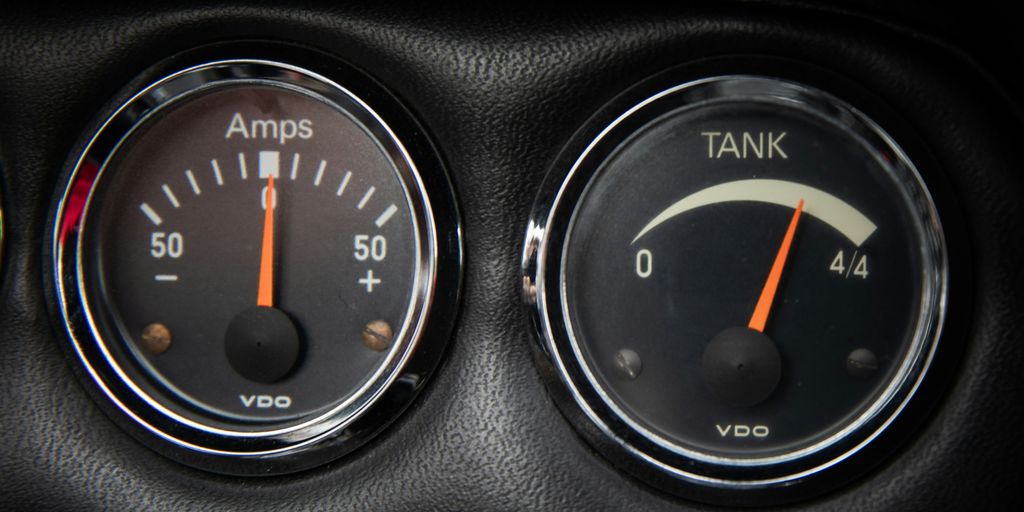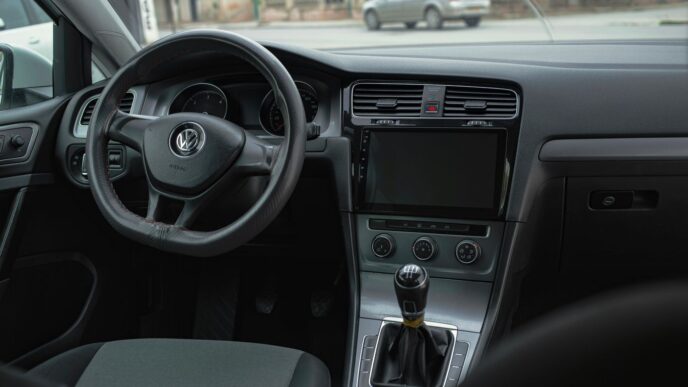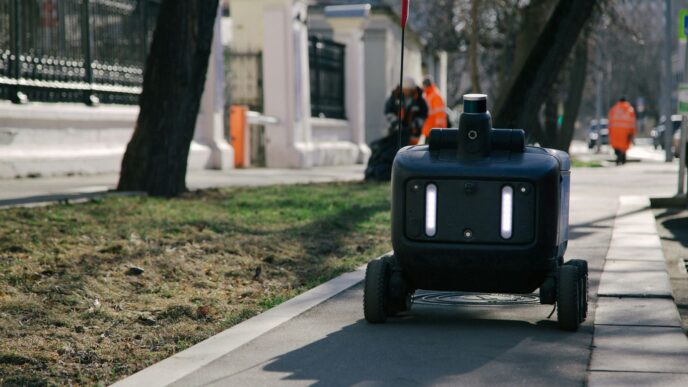So, you’ve heard about electric cars, specifically Teslas, and maybe you’ve even seen a few on the road. They’re pretty cool, right? But what about those stories, the ones that pop up every now and then, about a Tesla exploding? It sounds scary, and honestly, it can be. This article is all about digging into what causes these incidents, what to look out for, and how to stay safe. We’ll talk about why a tesla exploding might happen and what you need to know to protect yourself.
Key Takeaways
- Tesla battery explosions are often due to a process called thermal runaway, where batteries overheat and can catch fire.
- Past incidents, like the one in Florida, show how challenging these battery fires can be for emergency services to put out.
- You can watch for warning signs like battery swelling or unusual heat from your Tesla to catch problems early.
- If a Tesla battery explodes, your first step should always be to get to safety and call for help right away.
- Manufacturers have a big part to play in making sure these batteries are safe, and owners can help by following charging rules and keeping up with car maintenance.
Understanding Tesla Battery Explosions
The Science Behind Thermal Runaway
Okay, so let’s talk about why these Tesla batteries sometimes go boom. It all comes down to something called thermal runaway. Thermal runaway is basically a chain reaction inside the battery that causes it to overheat super fast. Think of it like a tiny fire that just keeps getting bigger and bigger. Lithium-ion batteries, which are what Tesla uses, are packed with energy, and if something goes wrong, that energy can be released in a very dramatic way. It’s not something you want to be around when it happens. Understanding thermal runaway is key to understanding the dangers.
Why Lithium-Ion Batteries Ignite
Lithium-ion batteries are everywhere these days – phones, laptops, and, of course, electric cars. But why do they sometimes catch fire? Well, lithium is a pretty reactive material. If the battery gets damaged, overcharged, or overheated, it can create a short circuit. This short circuit generates a ton of heat, which can then ignite the flammable materials inside the battery. It’s like a perfect storm of chemistry and physics. Plus, the battery’s design can sometimes contribute to the problem. If the battery isn’t properly cooled or if there are manufacturing defects, it increases the risk of ignition. Here are some common reasons:
- Physical Damage: Punctures or impacts can cause internal shorts.
- Overcharging: Exceeding the battery’s voltage limit.
- Manufacturing Defects: Impurities or flaws in the battery materials.
Factors Contributing to Battery Failure
So, what makes a Tesla battery more likely to fail? Several things can play a role. First off, the age of the battery matters. Over time, batteries degrade, and their internal components can break down. Extreme temperatures are also a big factor. Really hot or really cold weather can put a strain on the battery and increase the risk of failure. Driving habits also matter. Constantly accelerating and decelerating can generate a lot of heat. And, of course, accidents can cause physical damage that leads to battery failure. Regular vehicle maintenance checks can help identify potential issues before they become major problems. Here’s a quick rundown:
- Battery Age: Older batteries are more prone to failure.
- Extreme Temperatures: Heat and cold can degrade battery performance.
- Driving Habits: Aggressive driving can stress the battery.
- Accidents: Physical damage can lead to immediate failure.
Real-World Incidents of Tesla Exploding
The Florida Tesla Battery Explosion
Okay, so, back in September 2021, there was this crazy Tesla battery accident in Florida. A Model 3 was speeding like crazy in Coral Gables, and it ended up crashing into some trees. I mean, we’re talking 90 mph in a 30 mph zone – yikes! The impact was so intense that the car’s battery just exploded. Firefighters had a tough time because the battery kept reigniting. Apparently, the driver was only 20 years old. It’s a really sad situation, and it makes you think about how important it is to drive safely.
Previous Fiery Tesla Crashes
It’s not just the Florida incident, though. There have been other times when Teslas have caught fire after crashes. It makes you wonder about the safety of the batteries in these cars. People have been raising concerns about Tesla’s autopilot and self-driving features for a while now. Some say these features aren’t as safe as Tesla makes them out to be, and when you mix that with inexperienced drivers, it can lead to some seriously dangerous situations. It’s a bit scary to think about, honestly.
Examining High-Profile Incidents
There have been a few high-profile Tesla crashes that have really grabbed people’s attention. It’s not just about the crashes themselves, but also about what happens afterward – the fires, the battery explosions, and the questions about what could have been done differently. These incidents bring up a lot of questions about manufacturer responsibility and what Tesla is doing to make sure their cars are as safe as possible. It’s something that a lot of people are keeping an eye on, especially with the rise of electric vehicles.
Identifying Warning Signs of a Failing Tesla Battery
It’s super important to keep an eye on your Tesla’s battery. Catching problems early can save you from a major headache, or worse. While not every battery failure gives a heads-up, there are definitely some things to watch out for. I’ve been doing some digging, and here’s what I’ve found.
Recognizing Overheating Indicators
If your Tesla’s battery is starting to go bad, one of the first things you might notice is overheating. This doesn’t just mean the car feels a little warm after a long drive; it means the area around the battery is unusually hot to the touch. Think about it like this: your phone gets warm when you’re using it a lot, but if it’s burning hot for no reason, that’s a red flag. Same goes for your Tesla. If you see the car is overheating, you might want to check out Tesla battery accidents.
Detecting Swelling or Bulging
This is a big one, and it’s pretty obvious. Lithium-ion batteries, when they’re failing, often expand. This can cause the battery pack itself to swell or bulge. If you see any visible deformities in the shape of the battery compartment, or if panels near the battery seem to be pushing outwards, stop using the car immediately. It’s like when a can of food is bulging – you know something’s seriously wrong. Don’t ignore this sign; it could prevent a fiery crash.
Monitoring Inconsistent Charging Patterns
Pay attention to how your Tesla charges. If you suddenly notice that the battery life has decreased significantly, or if the charging process becomes erratic or unreliable, these can be signs of a failing battery. For example:
- The car charges much slower than usual.
- The battery percentage jumps around erratically.
- The car refuses to charge fully, or stops charging before it reaches 100%.
- You get error messages related to the battery during charging.
These inconsistent charging patterns could indicate that the battery cells are degrading or that there’s an issue with the battery management system. Keep an eye on these warning signs.
Immediate Actions During a Tesla Battery Explosion
Prioritizing Evacuation and Safety
Okay, so, a Tesla battery explodes. Not good! First thing’s first: get away from the car immediately. Seriously, don’t stand there and gawk. The fumes can be toxic, and there’s a risk of further explosions or the fire spreading. Move a safe distance away, and make sure anyone else nearby does the same. Your health and safety are the top priority here. Don’t try to be a hero.
Alerting Emergency Services Promptly
Once you’re a safe distance away, call 911. Don’t assume someone else has already called. Provide them with as much information as possible: your location, what happened (that it’s a Tesla battery explosion), and if anyone is injured. The faster the emergency services arrive, the better. Firefighters need to know it’s an electric vehicle fire because they require special procedures to extinguish it. Make sure you mention the potential for reignition due to thermal runaway.
Handling the Battery With Caution
Under normal circumstances, you shouldn’t be handling the battery at all. But, let’s say you absolutely have to move debris or something after the fire is completely out and emergency services have given the all-clear (highly unlikely, but just in case). Wear gloves and eye protection. Lithium-ion batteries contain hazardous materials. Don’t touch any exposed components with your bare hands. Dispose of any battery remains properly at a designated recycling center; don’t just toss it in the trash. It’s important to follow proper disposal guidelines to prevent environmental damage.
The Role of Manufacturer Responsibility

It’s easy to point fingers at owners or chalk up Tesla explosions to freak accidents, but let’s be real: the manufacturer has a HUGE role to play in all of this. They’re the ones designing, building, and testing these cars, so they need to step up and take responsibility.
Addressing Design and Material Flaws
Okay, so imagine you’re building a house. If you use cheap materials or a bad design, it’s gonna fall apart, right? Same with Tesla batteries. If there are flaws in the design or if they’re using low-quality materials, it’s a recipe for disaster. They need to invest in better engineering and rigorous testing to catch these problems before they end up on the road. It’s not just about making a cool car; it’s about making a safe car. For example, forming partnerships can help manufacturers improve battery expertise.
Ensuring Quality Assurance in Production
So, you’ve got a great design and good materials, but what if the assembly line is a mess? If the batteries aren’t put together correctly, or if there are shortcuts being taken during manufacturing, you’re gonna have problems. Quality assurance is key. This means:
- Strict inspections at every stage of production.
- Proper training for workers.
- Consistent monitoring of the manufacturing process.
It’s about catching those little errors before they become big explosions. It’s like baking a cake – you can’t just throw everything in and hope for the best. You need to follow the recipe and pay attention to the details.
Recalls and Safety Standards
Okay, so let’s say something does go wrong. A battery explodes, or there’s a pattern of failures. What then? That’s where recalls come in. Manufacturers need to be proactive about issuing recalls when there’s a safety issue. They also need to work with regulatory agencies to set and enforce safety standards. This isn’t just about avoiding lawsuits; it’s about protecting people’s lives. It’s about saying, "We messed up, and we’re going to fix it." Recalls are important to limit consumer dangers. If you’ve been injured by a car accident, you should seek legal help.
Preventative Measures for Tesla Owners
It’s easy to feel helpless when you read about Tesla fires, but there are definitely things you can do to lower your risk. It’s all about being proactive and informed. Let’s get into it.
Adhering to Charging Guidelines
Charging your Tesla correctly is super important. Always use the manufacturer-approved charger and follow the recommended voltage. Don’t cheap out on off-brand chargers – it’s not worth the risk. Overcharging is a big no-no, so don’t leave your car plugged in for days after it’s hit 100%. It’s also a good idea to avoid supercharging too often, as it can put extra stress on the battery. Think of it like this: you wouldn’t sprint a marathon, right? Same idea with your battery. Here’s a quick rundown:
- Use the correct charger.
- Avoid overcharging.
- Limit frequent supercharging.
Avoiding Physical Damage to Batteries
Your Tesla’s battery pack is pretty tough, but it’s not invincible. Punctures or impacts can cause serious problems, potentially leading to a fire. Be extra careful when driving over potholes or debris. If you’re in an accident, even a minor one, have the battery checked out by a professional. It’s better to be safe than sorry. Also, avoid modifying the battery pack yourself. Trust me, you don’t want to mess with that. If you’re curious about Tesla battery accidents, there are resources available to learn more about real-world incidents.
Regular Vehicle Maintenance Checks
Just like any car, your Tesla needs regular check-ups. Pay attention to any warning lights on the dashboard, especially those related to the battery or charging system. If you notice anything unusual, like strange smells or sounds, get it checked out ASAP. Keep an eye on the battery’s performance too. Is it draining faster than usual? Is it taking longer to charge? These could be signs of a problem. Regular maintenance can catch small issues before they turn into big, fiery ones. Think of it as preventative care for your car. Battery management systems are designed to help, but human oversight is still important. Also, make sure to keep up with any recalls and safety standards issued by Tesla.
Wrapping Things Up
So, we’ve talked a lot about Tesla battery fires and what can happen. It’s clear that while these cars are super popular, there are some real things to think about when it comes to their batteries. Things like thermal runaway, where the battery just gets too hot and can catch fire, are a big deal. And when that happens, it can be really tough for firefighters to put out. It’s not just Teslas, either; lots of things with lithium-ion batteries can have these issues. Knowing what to look for, like a swollen battery or weird charging, can help. And if something bad does happen, getting out of there and calling for help is the main thing. It just goes to show that even with cool new tech, there are always some risks we need to be aware of.
Frequently Asked Questions
What does “thermal runaway” mean for a Tesla battery?
Thermal runaway is like a chain reaction inside a battery where it gets hotter and hotter very quickly. This can happen if the battery is damaged, charged too much, or gets too hot. It can cause the battery to catch fire or even explode because the heat keeps building up.
Why do Tesla batteries sometimes explode or catch fire?
Tesla batteries can catch fire or explode if they get damaged, like in a car crash, or if there’s a problem with how they were made. When the battery gets hurt, the stuff inside can react with air, causing a fire.
How can I tell if my Tesla’s battery is having problems?
You might notice signs like the battery getting super hot, looking puffy or swollen, or not charging correctly. If you see any of these, it’s a big warning sign that something is wrong.
What should I do if a Tesla battery explodes?
If a Tesla battery explodes, the most important thing is to get everyone to a safe place right away. Then, call 911 immediately. Don’t try to put out the fire yourself; let the firefighters handle it because these fires are tricky.
Whose fault is it if a Tesla battery explodes?
Car makers like Tesla are supposed to make sure their cars are safe. This means using good parts, building them carefully, and fixing any problems with recalls if needed. They have a big job to keep drivers safe.
How can I help prevent my Tesla battery from exploding?
To help keep your Tesla battery safe, always follow the charging instructions, try not to hit or damage the battery area, and make sure you get your car checked regularly by a mechanic. These steps can help prevent problems.












